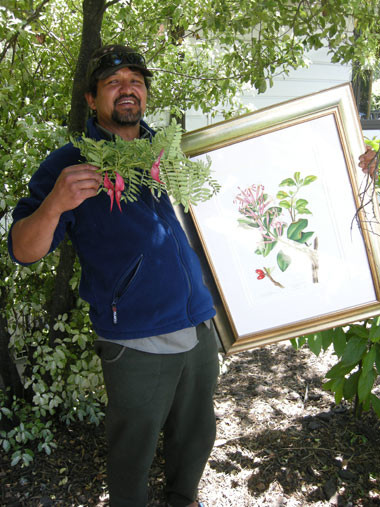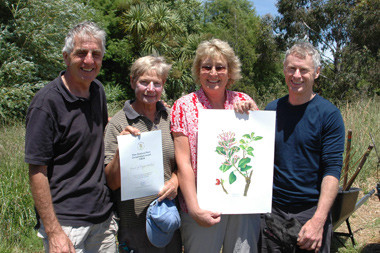The Network’s plant conservation awards were presented by Rob Fenwick (Network Patron) at the AGM in Auckland on Thursday 12 November 2009. Nelson dominated the awards with three (Community, Nursery and School) being made to groups from that region. These awards are made by the Network to acknowledge the outstanding contribution made by individuals, schools, communities, nurseries and councils in the protection of NZ’s globally important native plant life. The awards were as follows:
School
Winner: Salisbury School, Nelson
Salisbury School provides special education to female students who have intellectual impairments. Since 2004, students have been working on planting and caring for a native bush area. They have funded the project by growing vegetables and shrubs to sell. Students have learnt a great deal from the project and have an emotional connection with the area now.
 Individual
Individual
Winner: Graeme Atkins, Ruatoria
Graeme Atkins receives the Network’s individual award for his extraordinary efforts as a Department of Conservation Ranger caring for indigenous plants on the East Coast. He has a remarkable history of successful conservation projects, including setting up one of the largest plant protection areas in New Zealand and developing the Atkins detection method for Dactylanthus taylori (Wood rose). He has also worked tirelessly with schools to save kakabeak (one of the countries most threatened species) from extinction. The judges say the award acknowledges an amazing commitment to protecting New Zealand’s native flora.
Nursery
Winner: Titoki Nursery, Nelson
Titoki Nursery is a specialist wholesale native plant nursery, growing plants in bulk quantities for conservation, revegetation, wetlands, farm planting, land development and shelter. Their staff have been significant supporters of conservation for many, many years.
 Community
Community
Winner: Friends of Mapua Wetland
The Friends of Mapua are restoring Moutere lowland and lowland swamp forest. This is a 1ha area adjoining Aranui Park. They have been planting, protecting and weeding the area. From left to right are: David Mitchell, Carol, Judy Mitchell, and Shannel Courtney
Council
Winner: Waitakere City Council
Waitakere City Council has received the Network’s Council award. This is for developing a new threatened species policy designed to protect threatened plants on private land. The council has also engaged contractors and volunteers to survey for threatened plants and was the first in New Zealand to develop an eco-sourcing policy for restoration plantings.
